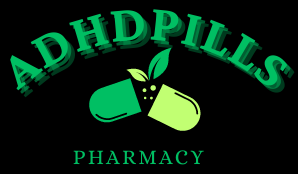Introduction:
Attention-deficit/hyperactivity disorder (ADHD) is a neurodevelopmental disorder that affects both children and adults. It is characterized by symptoms such as inattention, impulsivity, and hyperactivity. These symptoms can significantly impact daily life and academic or professional performance. While behavioral therapy and other interventions play essential roles in managing ADHD, medication is highly effective in many cases. In this article, we will delve into the science behind ADHD medication, exploring how these drugs work and why they are considered effective treatments.
1. Neurotransmitters and ADHD
To understand how ADHD medications work, we need to first examine the role of neurotransmitters in the brain. Neurotransmitters are chemical messengers that communicate between nerve cells, or neurons. In ADHD, two neurotransmitters play a crucial role: dopamine and norepinephrine.
2. Dopamine and Norepinephrine:
The Brain’s Key Players
Dopamine and norepinephrine are part of the brain’s dopamine-norepinephrine system, which regulates attention, focus, and impulse control. In individuals with ADHD, there is often a deficiency or imbalance of these neurotransmitters, leading to the characteristic symptoms of the disorder.
3. Stimulant Medications:
The Gold Standard
Stimulant medications are the most commonly prescribed and well-established ADHD treatment. They work by increasing dopamine and norepinephrine availability in the brain. The two main types of stimulant medications used for ADHD are methylphenidate (e.g., Ritalin) and amphetamine-based drugs (e.g., Adderall).
4. Mechanism of Action:
How Stimulant Medications Work
Stimulant medications block the reuptake of dopamine and norepinephrine. When these neurotransmitters are released into the synapses between neurons, they transmit signals related to attention and focus. In a normally functioning brain, after neurotransmitters deliver their message, they are reabsorbed by the neurons that released them. However, stimulant medications prevent this reabsorption, leading to increased levels of dopamine and norepinephrine in the synapses. As a result, brain regions responsible for attention and impulse control communicate better.
5. Non-Stimulant Medications:
An Alternative Approach
While stimulant medications are highly effective for many ADHD patients, some people may not respond well to or tolerate them. In such cases, non-stimulant medications, such as atomoxetine (Strattera) or guanfacine (Intuniv), may be prescribed. These medications target different neurotransmitter systems and can also manage ADHD symptoms.
6. Atomoxetine: Increasing Norepinephrine Levels
Atomoxetine is a selective norepinephrine reuptake inhibitor (NRI). Unlike stimulant medications that affect dopamine, atomoxetine specifically increases norepinephrine availability in the brain. By doing so, it enhances attention and reduces impulsivity and hyperactivity.
7. Guanfacine:
Regulating Noradrenergic Activity
Guanfacine acts on alpha-2 adrenergic receptors in the brain, which regulate the release of norepinep By targeting these receptors, guanfacine modulates noradrenergic activity and improves attention and impulse control in individuals with ADHD.
8. Individual Variability and Finding the Right Medication
It’s critical to note that ADHD patients may respond differently to various medications. What works well for one person may not work for another. Therefore, finding the right medication often involves trial and error under qualified healthcare professionals’ guidance.
9. Addressing Concerns and Side Effects
Like all medications, ADHD drugs can have side effects. Stimulant medications, for example, may cause appetite suppression, insomnia, or mood changes in some individuals. Most side effects are mild and temporary. It is crucial to discuss any concerns or potential side effects with a healthcare provider to ensure safe and effective treatment.
Conclusion:
ADHD medications, particularly stimulants, have a solid scientific basis and have proven to be highly effective in managing the symptoms of the disorder. By increasing dopamine and norepinephrine levels in the brain, these medications enhance attention, focus, and impulse control. This helps individuals with ADHD lead more productive and fulfilling lives. For those who may not respond well to stimulant medications, non-stimulant options offer viable alternatives. However, it’s essential to remember that medication is only one part of a comprehensive ADHD treatment plan. This may also include behavioral therapy, counseling, and lifestyle adjustments. Through a tailored and holistic approach, we can empower individuals with ADHD to reach their full potential and thrive in various aspects of life.




